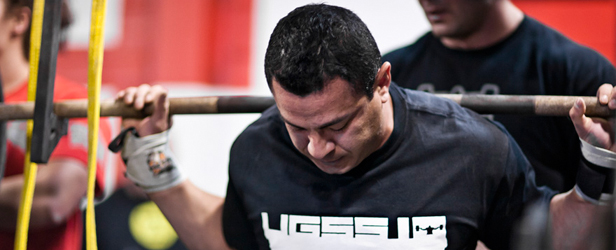
When it comes to strength and sports—and how to increase strength for those sports—most of the information out there is about sports such as football, powerlifting, basketball, and hockey. But what about the lesser known sports such as cheerleading, figure skating, and dance?
Recently, I received an email from a collegiate cheer athlete. His sport involved a lot of deep squatting and explosively “keg tossing” 110-lb girls over his head and catching their feet. He also had to do all sorts of overhead presses and holds. He needed to have a LOT of explosiveness in his legs and lots of triceps and shoulder strength as well as lots of core and shoulder stability.
However, when he was able to get into the gym to train, it sapped his strength. When it came time to “play” his sport either in practice or at games, he lacked the strength and explosiveness to perform the stunts. This athlete needed minimal training in the gym that allowed for fast recovery and increased strength throughout his season.
So how do athletes “playing” sports such as this gain strength while still maintaining the energy and explosiveness to perform on the floor? First, the volume in the gym needs to be cut down. This will put the body in a “training economy” situation where we need to select the biggest return on investment exercises for your goals.
For total body training, the clean and jerk or the snatch are ideal choices. I suggest alternating between deadlifts and front squats as the primary lower body exercises with a push press or push jerk as the primary upper body lift (alternating between bilateral and unilateral loading).
The unstable nature of the “load” in sports such as cheer means that athletes should rotate between push pressing bars, dumbbells, and unstable objects such as sandbags or kegs. If they don’t have access to that equipment, they can perform lighter sets of push presses with dumbbells of different loads or a barbell with 5–10 extra pounds on one side.
As far as total volume goes, start with only 1–2 work sets of each exercise and assess from there. If an athlete isn’t getting stronger and more explosive, then we can assume that he or she needs to increase the volume slightly. For example, if an athlete started at five sets of each, we wouldn’t know if it’s too much volume or not enough. So start low.
As far as frequency of workouts, try two workouts a week to begin with. Ideally, athletes who play these types of sports should lift AFTER a practice. Otherwise, they’ll be going into practice sessions with fatigued shoulders.
Elite Fitness Systems strives to be a recognized leader in the strength training industry by providing the highest quality strength training products and services while providing the highest level of customer service in the industry. For the best training equipment, information, and accessories, visit us at www.EliteFTS.com.








